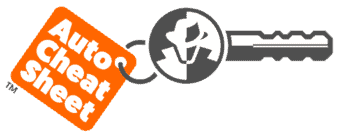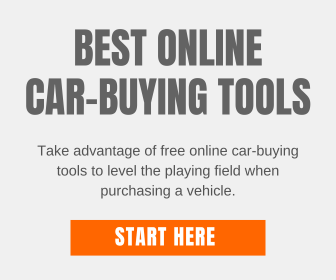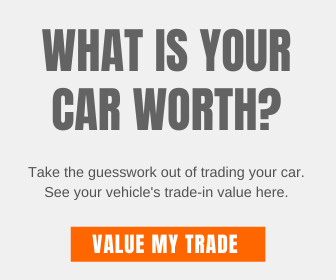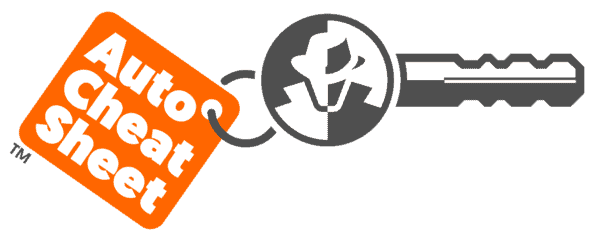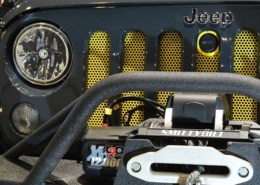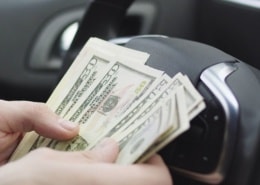The Bait and Switch Car Dealer Scam
The bait and switch car dealer scam has to be one of the oldest dealer advertising tricks in the book.
This sneaky scam usually takes place during your initial contact with a car dealership on the internet or over the phone, and it only gets worse once you arrive at the dealership.
What is the Bait and Switch Car Dealer Scam?
Dealers use the bait and switch advertising scam to lure you to the dealership by advertising or giving you a low price over the phone.
A dealer advertises a low price or payment and does not have the actual vehicle on the premises. The low price advertised is called the “BAIT.” When you inquire about the advertised vehicle, the car salesman tells you whatever they need to to get you to come into the dealership before disclosing whether the car is already sold or not in stock.
The “SWITCH” takes place when you arrive at the dealership; the salesperson tells you the car has already been sold or is unavailable at the advertised price.
However, the dealer has several vehicles similar to the one advertised at a higher cost.
How the Bait and Switch Scam Works
A dealer will advertise their most stripped, no-frills, cheapest new SUV in the paper at a payment that requires you to put 25% down, with A+++ credit, at a 72-month term.
The ad will show a picture of a fully-loaded brand new SUV, which is not the same trim level as the payment reflects. In significant, bold font type, a payment of $225/mo*. All the extra details like the amount down and excellent credit required will be in the small print (disclaimer) hidden in the ad.
What the dealer is hoping is while you’re browsing through the ads, all you focus on is the super low payment on the vehicle you’ve wanted to buy. This get’s you excited; you drop everything and head to the dealership.
Once you’re at the dealer, the “bait” (dealer’s advertisement) has done its job and got you in the door. Now it’s the sales staff’s job to complete the “switch” by getting you to spend more money (buy a different car at a much higher price) and give the dealership a chance to profit from you. This is much easier than you think and can happen in several ways.
Scenario #1 – The Vehicle has Already Been Sold
The first way is once you get to the dealership, the salesperson may say something like, “Oh, this car, we only had one available, and it didn’t even have air conditioning; we sold it just before you arrived.
However, I can show you some similar models that have more options and are very affordable.”
Dealers know this works more often than not. You say, “I’m already here, might as well take a look.” Big mistake, you’ve just fallen for the oldest trick in the book.
Scenario #2 – The Advertised Car is on the Lot and Available for Sale
The other way is less aggressive and doesn’t give you the feeling of being victimized by the bait and switch scam. The dealer has the “ad-car” on the lot and will show it to you so you can bump yourself off it onto a higher-priced model.
You explain that you want to take advantage of the deal in the paper. An intelligent salesperson will ask to see the ad, take the report from you, and conveniently make it disappear.
He will ask if he can take your paper with him to “check with his manager” to see if the advertised vehicle is still available. When the salesperson returns, your copy of the ad does not. This gets the ad and competitors’ ads out of your hands.
Highly trained car salespeople know how to handle these types of customers. He will start “down-selling” the ad car immediately; once you see the ad car and notice it doesn’t have many bells and whistles like power windows, locks, CD, carpet, or even a/c.
You’ll either get a little upset or be flexible in your wants and needs.
This is when the salesperson and the dealer’s sales system kicks in. The salesman may say, “I know you wanted the deal in the paper, but for a little bit more, I can get you into something with a whole lot more features that you’ll like to drive.”
At this point, you’ll either want to leave or say to yourself, “what the heck, I’m here anyway.” The “switch” is complete.
Scenario #3 – If You Want to Buy the Advertised Car
Most states require car dealers to list a stock number for any vehicle placed in an advertisement. You can take that stock number with you, but good luck finding the car. Some dealers have multiple locations and only have to list one stock number, and the vehicle could be at any one of their locations.
If you find the ad car and want to buy it, make sure you read the fine print in the ad and hold your ground. The dealer will try and talk you out of buying it because they don’t want to sell it.
They bought it as a loss-leader (stripped), and they won’t make any money selling it to you at the advertised price. The dealer will probably sell the ad car if you meet the requirements. A dealer usually keeps a couple of loss-leader vehicles on the lot to advertise the low prices and payments in their advertisements. The trick is finding them.
As a dealer, I would order a few stripped cars from the manufacturer so I could legally advertise super low payments and prices in my print, radio, and television advertising. I’d order some of these vehicles without carpet, radio, or even air conditioning.
How to Avoid the Bait and Switch Scam
- Dealers are highly imaginative when it comes to pricing autos in their advertisements. Always look for the disclaimer in a dealer’s ad and read the tiny print. In the advertising, look for the asterisk or symbol next to a payment. If there is a symbol, read the small print and match the character to the specific payment criteria.
- Avoid dealer advertising altogether. Competition between dealers will always get you the best price. Use the Internet to get competitive new car price quotes online.
- Driving to a dealership located in a big city just because you saw a super low price in an ad is a big mistake. All dealerships buy their vehicles from the manufacturers at the exact cost.
- Familiarize yourself with deceptive car dealership advertising terms.
- Don’t talk to several salespeople at the same time. Dealers may use this technique, overloading you with information, to confuse you into buying a car without making good car-buying decisions.
- Do your homework first before contacting a car dealership. Decide on the vehicle you want to buy and determine the dealer’s actual new car cost before making an offer.
- Don’t visit a car dealership alone. Take a close friend or family member with you. Fast-talking salespeople are very talented in manipulating you into buying something you don’t want or, worse yet, can’t afford.
